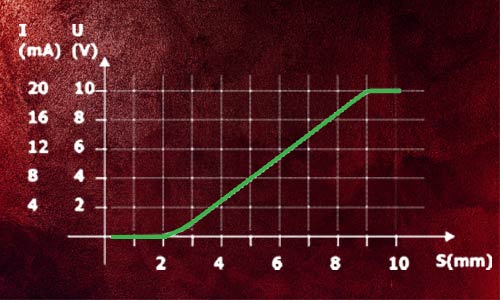Analog Inductive Proximity Sensor [Working Principle, Features, Applications]
Working with electronic devices means dealing with both analog and digital signals. Here we will discuss Analog Inductive Proximity Sensor. A signal is a wave that contains measurable information about a phenomenon. For example, you can measure power fluctuations, whether the car is on or off, the temperature of the car refrigerator, the amount of fuel in the car tank, and the like.
This information changes over time, which is divided into two categories of analog and digital signals, depending on the type of change. Signals are sent between two devices to send and receive information such as audio, video, etc. Normally, signals are transmitted by wire, but radio waves are also transmitted through the air. Sensors are divided into two categories according to the type of output signal: Digital and Analog proximity sensor.
Another type of inductive sensor is the analog output type. Analog inductive proximity sensor are sensors that detect metallic objects within their working range.
This reaction appears as a line voltage (often 0 … 10 V) or current (4 … 20 mA) at the output or in other words correlates linearly to the distance that the sensor detects. The following curve is an example of the output characteristic of these sensors:

Working Principle Analog Inductive Proximity Sensor
This high-precision sensor is used to measure the position of an object and consists of a cable and a transmitter. These signals are connected to the transmitter by cable and the transmitter sends them in a readable format.
The output of the analog sensor is a continuous voltage or current and its function is based on the distance of the object from the sensor.
These sensors have an analog signal at their output that is proportional to the measured quantity.
Most physical parameters such as temperature, speed, pressure, displacement,… are all analog values.
In these sensors, each measured parameter is attributed to a signal (usually of voltage or current type), which will determine the desired quantity by receiving this signal.
These types of signals change continuously over time, or in other words, they will never change suddenly and range from a few microvolts (μV) to several millivolts (mV).
So due to the continuous nature of analog signals, analog sensors have a high degree of accuracy and reliability.
The proximity sensor with analog output have an oscillator circuit made of a parallel resonance circuit with a coil, a capacitor, and an amplifier.
The coil generates electromagnetic fields towards the outside. If a metal object comes close into the range of the electromagnetic field, eddy currents are induced into the metal object and provide a continuously variable output.
Also, they are useful where longer linear ranges are needed.
Features of analog output inductive sensors
- Accurate detection of target movement
- high accuracy
- Stability under high temperature
- Increase the sensing distance
- Ability to send analog data directly to measuring devices
Some applications for the analog inductive sensors include:
- Measuring the thickness of metal parts
- Measuring the distance of metal parts from the sensor
- Distinguish small and large parts from each other
- Sorting and counting on machines
- Printing machines
- Machine tool spindle position
- Position monitoring on grippers and clamps
- Material handling and automated assembly
Please refer to other proximity sensor articles for more information:
Analog inductive sensors detect the cans in cardboard boxes
Proximity sensor working principles
Recent Posts
-
Booster Pump Troubleshooting and Maintenance: How to Fix and Prevent Common Issues
1. Introduction Imagine turning on your faucet only to be greeted with a weak trickle of water when …22nd Apr 2025 -
Energy-Efficient Booster Pumps: Selection and Tips for Maximizing Performance
1. Introduction Imagine never having to deal with fluctuating water pressure, noisy pumps, or skyroc …19th Apr 2025 -
Booster Pumps for Sustainable Water Systems: Irrigation and Rainwater Harvesting Solutions
1. Introduction Water scarcity is no longer a distant threat—it’s a reality affecti …16th Apr 2025

![Analog Inductive Proximity Sensor [Working Principle, Features, Applications] Analog Inductive Proximity Sensor [Working Principle, Features, Applications]](https://cdn11.bigcommerce.com/s-sgprcd6/images/stencil/1193x795/uploaded_images/analog-inductive-proximity-sensor.jpg?t=1645344232)


